#usa ecology
Text
What i've been learning thru my research is that Lawn Culture and laws against "weeds" in America are deeply connected to anxieties about "undesirable" people.
I read this essay called "Controlling the Weed Nuisance in Turn-of-the-century American Cities" by Zachary J. S. Falck and it discusses how the late 1800's and early 1900's created ideal habitats for weeds with urban expansion, railroads, the colonization of more territory, and the like.
Around this time, laws requiring the destruction of "weeds" were passed in many American cities. These weedy plants were viewed as "filth" and literally disease-causing—in the 1880's in St. Louis, a newspaper reported that weeds infected school children with typhoid, diphtheria, and scarlet fever.
Weeds were also seen as "conducive to immorality" by promoting the presence of "tramps and idlers." People thought wild growing plants would "shelter" threatening criminals. Weeds were heavily associated with poverty and immortality. Panic about them spiked strongly after malaria and typhoid outbreaks.
To make things even wilder, one of the main weeds the legal turmoil and public anxiety centered upon was actually the sunflower. Milkweed was also a major "undesirable" weed and a major target of laws mandating the destruction of weeds.
The major explosion in weed-control law being put forth and enforced happened around 1905-1910. And I formed a hypothesis—I had this abrupt remembrance of something I studied in a history class in college. I thought to myself, I bet this coincides with a major wave of immigration to the USA.
Bingo. 1907 was the peak of European immigration. We must keep in mind that these people were not "white" in the exact way that is recognized today. From what I remember from my history classes, Eastern European people were very much feared as criminals and potential communists. Wikipedia elaborates that the Immigration Act of 1924 was meant to restrict Jewish, Slavic, and Italian people from entering the country, and that the major wave of immigration among them began in the 1890s. Almost perfectly coinciding with the "weed nuisance" panic. (The Immigration Act of 1917 also banned intellectually disabled people, gay people, anarchists, and people from Asia, except for Chinese people...who were only excluded because they were already banned since 1880.)
From this evidence, I would guess that our aesthetics and views about "weeds" emerged from the convergence of two things:
First, we were obliterating native ecosystems by colonizing them and violently displacing their caretakers, then running roughshod over them with poorly informed agricultural and horticultural techniques, as well as constructing lots of cities and railroads, creating the ideal circumstances for weeds.
Second, lots of immigrants were entering the country, and xenophobia and racism lent itself to fears of "criminals" "tramps" and other "undesirable" people, leading to a desire to forcefully impose order and push out the "Other." I am not inventing a connection—undesirable people and undesirable weeds were frequently compared in these times.
And this was at the very beginnings of the eugenics movement, wherein supposedly "inferior" and poor or racialized people were described in a manner much the same as "weeds," particularly supposedly "breeding" much faster than other people.
There is another connection that the essay doesn't bring up, but that is very clear to me. Weeds are in fact plants of the poor and of immigrants, because they are often medicinal and food plants for people on the margins, hanging out around human habitation like semi-domesticated cats around granaries in the ancient Near East.
My Appalachian ancestors ate pokeweed, Phytolacca americana. The plant is toxic, but poor people in the South would gather the plant's young leaves and boil them three times to get the poison out, then eat them as "poke salad." Pokeweed is a weed that grows readily on roadsides and in vacant lots.
In some parts of the world, it is grown as an ornamental plant for its huge, tropical-looking leaves and magenta stems. But my mom hates the stuff. "Cut that down," she says, "it makes us look like rednecks."
9K notes
·
View notes
Text
Hey guys, I know there are a lot of really severe tragedies in the world right now and I in no way desire to push those aside, nor do I really want to load another thing onto people's plates, but anyone here in the US needs to be aware that on March 11, 2024, an agricultural company known as NEW Cooperative spilled 265,000 gallons (1500 tons) of liquid nitrogen fertilizer into the East Nishnabotna River. This is the ecological equivalent of dropping a nuclear weapon into the river. Over a 60 mile stretch downstream of the spill its been a near total ecological wipeout for the river. So far, an estimate of 850,000 fish have been killed from this spill, and that's to say nothing for the insects, amphibians, reptiles and birds that relied on or lived in this river. It is literally filled with animal corpses. This river flows into the Missouri River and the impacts will likely continue to spread far past this 60 mile stretch. And this disaster has barely made local tv in Iowa, let alone national tv, despite the fact that 60 miles of river ecosystem were just wiped out in a way that may be impossible to recover from. And what's the punishment for this heinous act of destruction through negligence, you might ask? As it stands, its looking like a 6k fine from the DNR to the company. Not 600k. Not 60k. 6000 dollars. The maximum fine that the DNR can charge in Iowa is 10k unless they decide to take it further in court. That's why these spills are so frequent in Iowa: it's literally cheaper to eat the fines than it is to bother properly storing fertilizer. I don't know exactly what the proper course of action is here, or who needs to be contacted to enact change--I'm hoping someone more knowledgeable than me will chime in with that information--but at the very least, every one of us should know. Every one of us should make sure we don't forget this. And every one of us should blacklist NEW Cooperative fertilizer unilaterally.
Sources:
12K notes
·
View notes
Text
In the wake of North America's recent solar eclipse, another historic natural event is on the horizon. From late April through June 2024, the largest brood of 13-year cicadas, known as Brood XIX, will co-emerge with a midwestern brood of 17-year cicadas, Brood XIII.
This event will affect 17 states, from Maryland west to Iowa and south into Arkansas, Alabama and northern Georgia, the Carolinas, Virginia and Maryland. A co-emergence like this of two specific broods with different life cycles happens only once every 221 years. The last time these two groups emerged together was in 1803, when Thomas Jefferson was president.
Continue Reading.
178 notes
·
View notes
Text
In the last decade, cacti have exploded in popularity, becoming a mainstay of hipster decor around the world – from the homes of China’s growing middle class and the meticulous cactus gardens in Japan to the fashionable cafes of Europe.
In the US alone, sales of cacti and succulents surged 64% between 2012 and 2017; a market that is now estimated to be worth tens of millions. But rising demand has met a thorny problem: cacti are extremely slow-growing, with some species taking decades to grow from seed to full maturity. Hence, many opt for the shortcut: pulling them right out of the ground.
For land managers and scientists who work with cacti, the problem appears to be on the rise. While the precise scale is difficult to measure, and catching thieves red-handed in remote deserts is nearly impossible, major busts offer clues. In 2014, more than 2,600 stolen cacti were seized at US borders – up from 411 just a year before. But law enforcement officials and field scientists say that data represents only a tiny fraction of cactus actually being stolen.
“When I first started we rarely investigated cactus theft,” said one US Fish and Wildlife Service detective, who asked not to be named due to the undercover nature of his work. He has covered the south-west region for more than a decade and says the problem is increasing. “Now we are prosecuting cases involving thousands of plants at a time. The demand is so high that I fear we can’t stop the illegal trade going on.”
While many plants fall victim to underground cactus cartels, a seemingly more benign form of theft has become part of the problem, too. International visitors who come to the south-west specifically to view rare cactus in the wild sometimes take a souvenir home, and social media is exacerbating the problem.
“We’ve had Austrian, German and Italian collectors express strong interest on social media for these plants and they share GPS coordinates,” said Wendell “Woody” Minnich, the former president of the Cactus and Succulent Society of America. “Some of these people come to steal, especially when a new species is identified. They hide the plants in their suitcase and take them back to their greenhouse in Europe.”
Minnich, 71, has been a cactus grower and nursery operator in New Mexico for 50 years. He said the internet had significantly accelerated theft of rare, slow-growing cactus species over the last decade. A case in point: Sclerocactus havasupaiensis, which is native to one drainage at the bottom of the Grand Canyon, was being auctioned on eBay in early January by a seller in Ukraine. It was just one of more than 365 internationally protected plant species that are openly traded on Amazon and eBay.
“Do a Google search on Sclerocactus and you can find people in Russia selling them,” said Minnich. “I have been on public lands in Arizona, New Mexico and Colorado where years ago Sclerocactus were everywhere, and recently I found just a bunch of little holes in the ground.”
#environmentalism#ecology#botany#plants#cacti#national parks#crime#theft#smuggling#usa#saguaro#sclerocactus havasupaiensis
144 notes
·
View notes
Text

Erotophobia And the Colonization of Queers/Nature prt 2
“The widespread homosexuality of the North American Indians was given as an excuse by the invading Christian whites for their extermination” (1978, 101)(126)—numerous reports on the ‘sinfulness’ of native sexual behavior such as the lack of inhibition, the prevalence of sodomy, and tolerance or even respect for transgender persons—fueled arguments for the colonization of the native people and their land in the name of Christianity.
Since the church had been prosecuting the erotic since its inception, choosing the sexual behavior of indigenous peoples seemed like adequate justification. Gaard provides several examples of colonists’ erotophobic thoughts and feelings about the native people such as men having long hair and skirts or being ‘addicted to sodomy’ (127) or the presence of gender diverse groups and individuals such as the nadleeh and that generally most villages had two or three ‘transgendered’ people.

It was intolerable to the conquerors who could not comprehend such a worldview so fundamentally different from their own. It brought out a fear of themselves, of their own nature. What followed was genocide, torture, enslavement and missionary zeal. Gaard provides several brutal quotes from Spanish conquistadors that demonstrate this. Gender role deviance and the accepted presence of non-heterosexual erotic practices had become the rhetorical justification for genocide and colonialism. But even heterosexual practices devoid of Christian restrictions were objectionable to colonists. Gaard then provides several examples of these ‘heterosexual’ practices among the native tribes that were deemed ‘bestial’ (129) and improper.
Colonial erotophobia continued through westward expansion. In the twentieth century narratives around colonialism and exploration continue along the same line. “Subordinated countries are feminized, subordinated men are emasculated, and the colonized women are turned into fodder for imperialist postcards” (re: colonized women are hypersexualized and dehumanized ie ‘sexy native princess costumes’ ,129) and that U.S. polar expeditions created a narrative of U.S. national identity as an essentially white masculine one (129). Colonial nationalism and the ‘master identity’ share a similar structure as “a set of ideas that sharpens the distinctions between ‘us’ and ‘them’” and is inevitably shaped by what it is not and what is opposes and is ‘forever haunted by [its] various definitional others” (Parker et al. 1992, 5) (130).
“The native feminized other of nature is not simply eroticized but also queered and animalized, in that any sexual behavior outside the rigid confines of compulsory heterosexuality becomes queer and subhuman. Colonialism becomes an act of the nationalist self-asserting identity and definition over and against the other” (131). Colonization can therefore be seen as a relationship of compulsory heterosexuality whereby the queer erotic of non-westernized peoples, their culture, and their land, is subdued into the missionary position—with the conqueror ‘on top’” (131).

#colonialism#usa#erotophobia#racism#dehumanization#queer ecology#queer theory#ecofeminism#sexism#heteronormativity#christianity#rape //#queer history#toward a queer ecofeminism
39 notes
·
View notes
Text
𝔒𝔟𝔦𝔱𝔲𝔞𝔯𝔶 - 𝔖𝔩𝔬𝔴𝔩𝔶 𝔚𝔢 ℜ𝔬𝔱
#Obituary#Left to Die#Slowly We Rot (2008 Version)#EP#Genre: Death Metal#Lyrical themes: Death Gore Life Ecology#USA
23 notes
·
View notes
Text
Continued agricultural extensification under current practices cannot sustainably shoulder the burden of scaling society’s food, fiber, and fuel production systems without compromising the planet’s supply of ecosystem services.
Cropland expansion in the United States produces marginal yields at high costs to wildlife
30 notes
·
View notes
Text

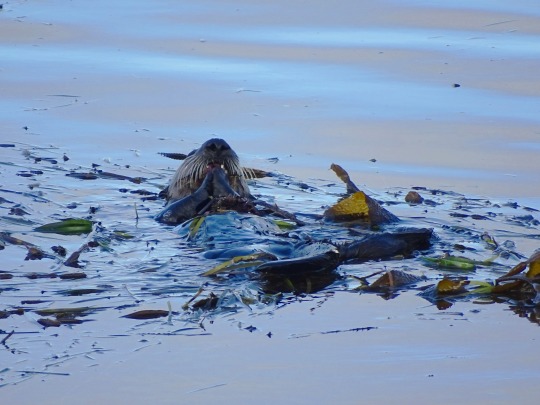
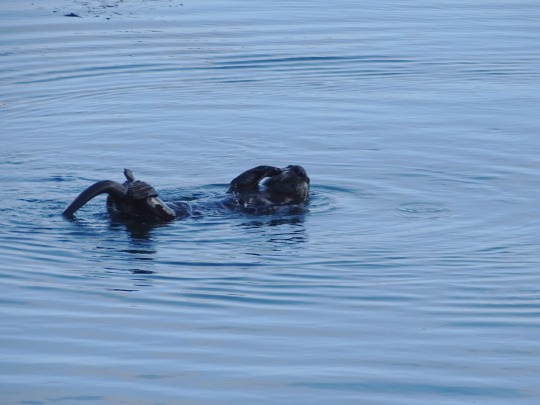
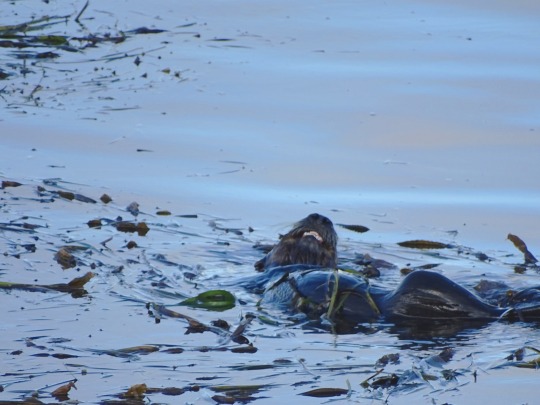

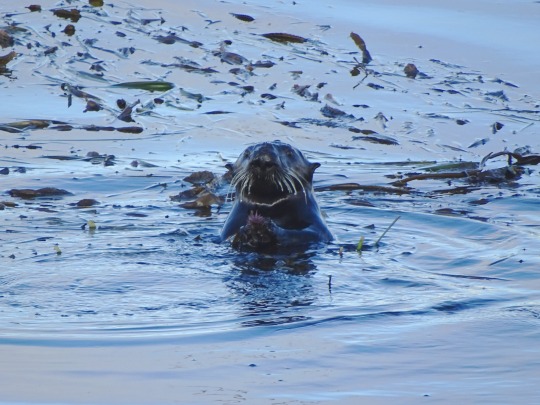

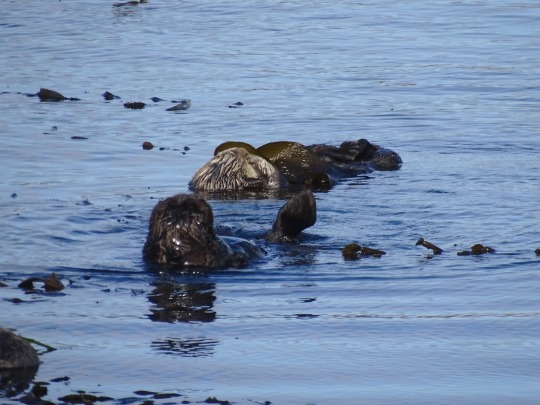


Sea Otter Heaven, Morro Bay (No. 6)
Although the southern sea otter's range has continuously expanded from the remnant population of about 50 individuals in Big Sur since protection in 1911, from 2007 to 2010, the otter population and its range contracted and since 2010 has made little progress. As of spring 2010, the northern boundary had moved from about Tunitas Creek to a point 2 kilometres (1.2 mi) southeast of Pigeon Point, and the southern boundary has moved along the Gaviota Coast from approximately Coal Oil Point to Gaviota State Park. A toxin called microcystin, produced by a type of cyanobacteria (Microcystis), seems to be concentrated in the shellfish the otters eat, poisoning them. Cyanobacteria are found in stagnant water enriched with nitrogen and phosphorus from septic tank and agricultural fertilizer runoff, and may be flushed into the ocean when streamflows are high in the rainy season. A record number of sea otter carcasses were found on California's coastline in 2010, with increased shark attacks an increasing component of the mortality. Great white sharks do not consume relatively fat-poor sea otters but shark-bitten carcasses have increased from 8% in the 1980s to 15% in the 1990s and to 30% in 2010 and 2011.
Source: Wikipedia
#Sea Otter Heaven#California sea otter#Enhydra lutris#Morro Bay#hotel#travel#original photography#vacation#tourist attraction#USA#summer 2022#Califorina#West Coast#San Luis Obispo County#wildlife#animal#seaweed#Morro Rock Ecological Preserve#Pacific Ocean#beach#cityscape#landscape#seascape#kelp#fauna#landmark#marine mammal
10 notes
·
View notes
Text
i keep seeing people who aren't usamerican reblogging that post about being protected under the migratory birds act and im like lol no tf u arent
#google ur local bird protection legislation resist the americanisation of the nature conversation!!!;#p sure theres treaties w places like canada under the usa migratory birds act#but idk if thats the same as birds being protected under the same legislation in canada so take with a grain of salt#you Might have a migratory birds protection act!#here in the uk tho im pretty sure birds are protected under the countryside & wildlife act overall#ecology#rowanposting
9 notes
·
View notes
Text
Hot air: five climate myths pushed by the US beef industry
“While fossil fuel consumption has done the most to put us on our dangerous path to climate catastrophe, a widely cited 2020 study in the journal Science argued that we can no longer avoid the worst of the climate crisis by cutting fossil fuels alone. Staying below the average global temperature rise of 2C – a threshold that scientists say will lead to systems collapse, mass extinctions, fatal heat waves, drought and famine, water shortages and flooded cities – will require ‘rapid and ambitious’ changes to food systems.
“The single most impactful food-related change we can make, according to their findings, is not increasing yields, ramping up agricultural efficiency or cutting food waste, though those approaches all would help. It’s adopting a plant-rich diet.
“While building out energy infrastructure can take years, changing our diet is something we can work toward today.”
#meat industry#beef industry#beef#diet#meat#western diets#plant-based#vegan#vegetarian#overconsumption#emissions#greenhouse gases#climate crisis#climate breakdown#climate change#climate#ecological crisis#usa#the west
42 notes
·
View notes
Text
Millions of Wildflowers Now Delight the Communtiy Where Vermont Couple Used to Spend All Day Mowing Grass https://www.goodnewsnetwork.org/millions-of-wildflowers-now-delight-the-communtiy-where-vermont-couple-used-to-spend-all-day-mowing-grass/
#good news#wild flowers#wildflowers#native plants#environmentalism#science#environment#vermont#usa#nature#rewilding#ecology
6 notes
·
View notes
Text
Here’s a link to donate
And here’s a link with some other things you can do to help (particularly for those in the US!)
#thacker pass#landback#indigenous resistance#indigenous rights#lithium mining#reno-sparks indian colony#paiute#nevada#oregon#usa#us politics#turtle island#direct action#news#ecology#peehee mu’huh
35 notes
·
View notes
Text

Friendly ghostie fish haunting your rivers since the dinosaur days!
Pallid Sturgeon (Scaphirhynchus albus)
Missouri and Mississippi River basins, USA
Status: Critically Endangered
Threats: dams, channels, and other alterations to river systems, rarely reproduces in the wild
---
support me on ko-fi || newsletter
#sturgeon#fish#freshwater fish#fish art#fishblr#artists on tumblr#ecology#missouri river#mississippi river#usa#north america
9 notes
·
View notes
Text

LGBTQ America: A Theme Study of Lesbian, Gay, Bisexual, Transgender and Queer History—chapter 09. Sexual and Gender Diversity in Native America and the Pacific Islands by Will Roscoe. (final)
Two Spirits Today: Renewal and Change
The section starts and continues by discussing two-spirit activism and cultural renewal being fostered by two-spirits and lgbtq native people. One such event is the intertribal powwows such as the Bay Area American Indian Two Spirits Powow which in 2015, drew over 2,000 attendees (09-12). Attendees were asked to define two-spirit, the answers varied; “two spirit means being born with a male and a female spirit”, while another said that the term is “more of a historical reminder that before colonization all of our tribes had multiple genders” (09-12)
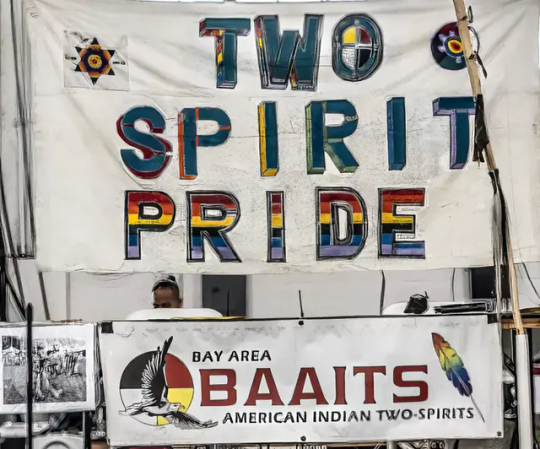
Two Spirits in the History of the United States

The author then tells us about four individuals who by our modern standards would be considered two-spirit, all of whom led incredibly fascinating lives. Most of them faced violence and prejudice in their lives. And this remains true for two-spirits today—the author mentions a young two-spirit Navajo named Fred Martinez Jr. who had been bullied and was murdered in a hate crime in 2001.
(Rest in Power, relative...)

Conclusion: History Matters
“Two-spirit/LGBTQ history not only challenges stereotypes and transforms prejudice, it provides the path to self-esteem, empowerment, and community for two-spirit-LGBTQ native people, while the stories of two-spirit males and females in American history teach us all about sexual and gender diversity and the ways in which these differences make distinctive cultural and historical contributions” (09-29)
#queer history#two spirited#two spirit#queer theory#usa history#heteronormativity#erotophobia#indigenous cultures#ecofeminism#indigenous people#queer ecology#critical ecology#ecology#environmental politics#colonialism#intersexuality#environmentalism#lgbtq#2s#2slgbtqia+
24 notes
·
View notes
Audio
Obituary - Suffocation
#Obituary#Slowly We Rot#suffocation#Release date: May 16th 1989#Full-length#Genre: Death Metal#Themes: Death Gore Life Ecology#USA
137 notes
·
View notes
Text
youtube
Willow is such an incredibly useful plant, and in this video we explore the details of willow fencing, basket weaving, and ecological restoration using this glorius species!
COMMON QUESTIONS ANSWERED:
Where is this located?: The Willamette Valley of Western Oregon. Zone 8a. Rainfall ~42" per yr.
What varieties of willow do you recommend?: (From Kara)"In the video you see: Salix alba vitellina, Salix purpurea, Salix daphnoides, and Salix fragilis (various varieties of each). Streambank stabilization is done with native willows (Salix scouleriana and Salix lasiandra in western Oregon). But also, people should look at https://www.willowworld.org/ for specific uses of willows. There really is more to learn than can be communicated in this one video!"
Sorry, we didn't know Willow is considered invasive in Australia!
Featuring Kara Huntermoon - https://karahuntermoon.com/
Basket weaving by AnewDayFolkcraft - https://www.etsy.com/shop/AnewDayFolk...
Instagram:
/ anewday.folkcraft
Willow backpack on thumbnail by Beaver Coppiced Willow -
/ beaver_coppiced_willow
Oregon State University Online Permaculture Design Course:
https://workspace.oregonstate.edu/cou...
Andrew Millison’s links:
https://www.andrewmillison.com/
https://permaculturedesign.oregonstat...
JOIN THIS CHANNEL to get access to uncut video content and live Q & A sessions:
/ @amillison
SIGN UP FOR MY FREE NEWSLETTER:
https://share.hsforms.com/1X79TznHYRC...
#Andrew Millison#solarpunk#willow#willow tree#living fence#basket weaving#ecological restoration#Salix alba vitellina#Salix purpurea#Salix daphnoides#Salix fragilis#Salix scouleriana#Salix lasiandra#Oregon#USA#Kara Huntermoon#Youtube
6 notes
·
View notes